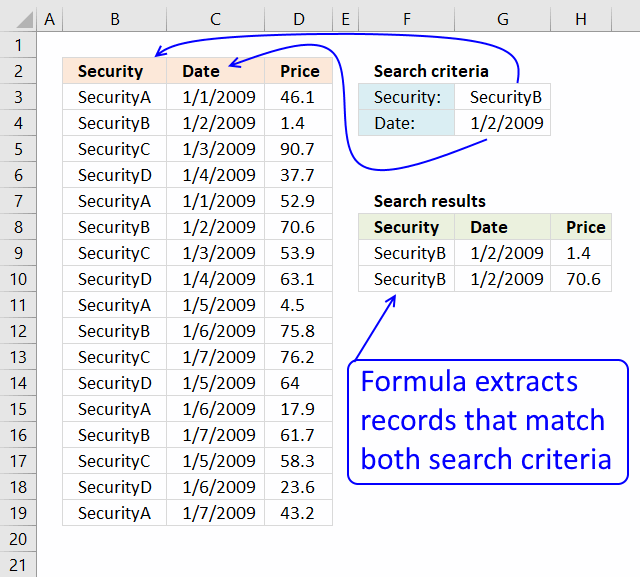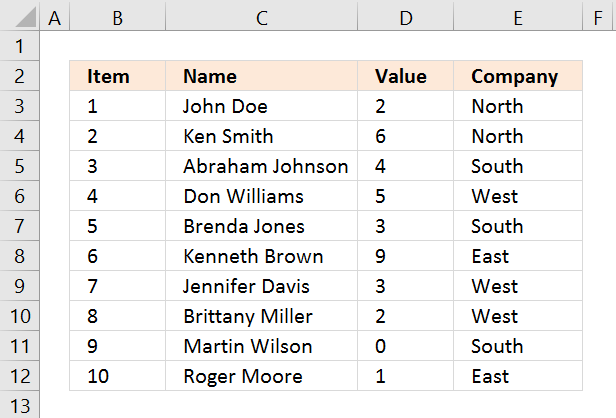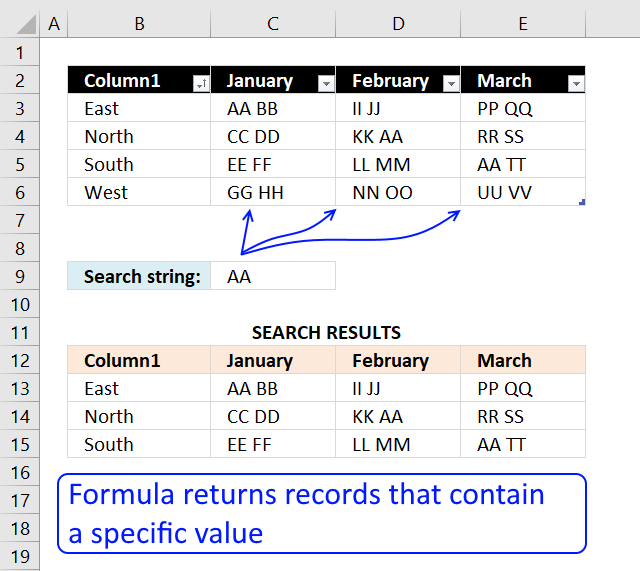'Filter records' category
Match two criteria and return multiple records
This article demonstrates how to extract records/rows based on two conditions applied to two different columns, you can easily extend […]
This article demonstrates how to extract records/rows based on two conditions applied to two different columns, you can easily extend […]
Extract all rows from a range that meet criteria in one column
Lookup with criteria and return records.
Lookup with criteria and return records.
Search for a text string in a data set and return multiple records
This article explains different techniques that filter rows/records that contain a given text string in any of the cell values […]
This article explains different techniques that filter rows/records that contain a given text string in any of the cell values […]
Extract records between two dates
This article presents methods for filtering rows in a dataset based on a start and end date. The image above […]
This article presents methods for filtering rows in a dataset based on a start and end date. The image above […]
Excel formula categories
AverageChooseCombine MergeCompareConcatenateConditional FormattingCountCount valuesDatesDuplicatesExtractFilterFilter recordsFiltered valuesFilterxmlHyperlinkIf cellIndex MatchLogicLookupsMatchMaxMinNumbers in sumOR logicOverlappingPartial matchRecordsSequenceSmallSort bySort valuesSumSumifsSumproductString manipulationTimeUnique distinct recordsUnique distinct valuesUnique recordsUnique valuesVlookupVlookup return values



